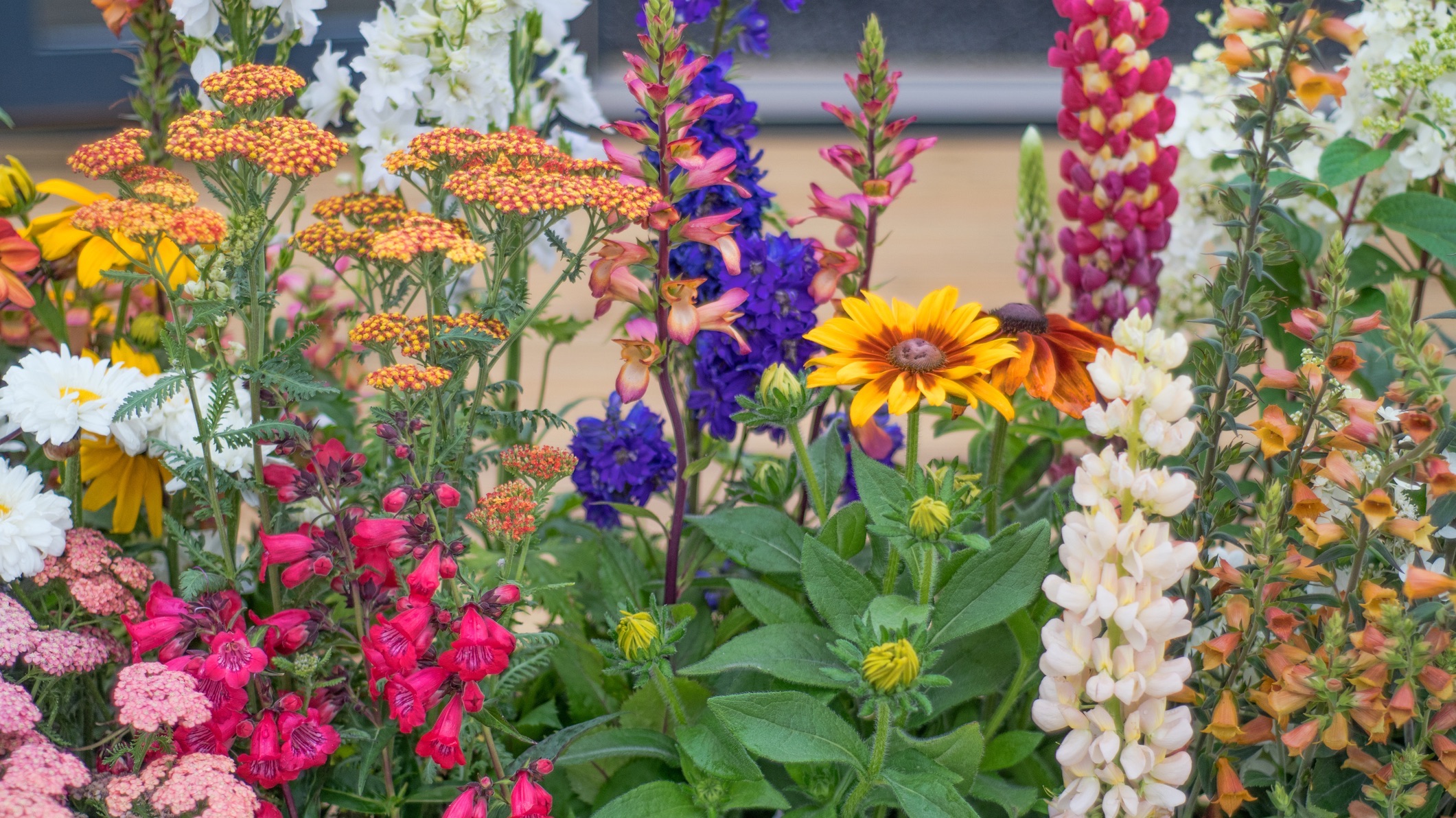Chaos gardening took center stage on social media in 2023, and it appears to be here to stay. This free-spirited planting style invites gardeners to scatter a mix of seeds, often without a formal design, and let nature take the lead. Rather than following traditional rules of spacing or timing, chaos gardening celebrates spontaneity, biodiversity, and the joy of surprise.
Although it feels like a rebellious break from conventional gardening, the idea isn’t entirely new. The appeal lies in its intentional embrace of disorder. Chaos gardening is all about tossing seeds freely, without the stress of a rigid plan. But is it really as effortless and rewarding as viral videos make it seem?
It can absolutely be a fun, low-stress way to add biodiversity to your yard—but before tossing that seed packet with wild abandon, there are a few things worth considering (and yes, even planning).
Blending tradition with trend
While the term “chaos gardening” is new, the concept has deep roots. Traditional cottage gardens—with their overflowing mix of flowers, herbs, and vegetables—thrived on density, diversity, and a touch of randomness. Likewise, wildflower meadows bloom naturally through self-seeding, requiring little human intervention.
Many gardeners already welcome a bit of chaos by letting self-sowing plants spread where they may or by nurturing surprise volunteer seedlings. These unexpected additions often bring charm, color, and life to a space with minimal effort.
What sets today’s version apart is its viral rise on TikTok and Instagram. Thanks to social media, chaos gardening has become shorthand for tossing down seeds, documenting the process, and embracing whatever grows. Sometimes the result is a vibrant, flower-filled jungle; other times, it’s a tangled mix of greenery and surprise veggies. Either way, the core message is the same: embrace the unpredictable, and see what grows.
Why it’s popular
Chaos gardening has become popular, especially among newer and younger gardeners, for several reasons.
First, it’s easy. Gardeners don’t need detailed plans, tools, or prior experience—just a few seed packets and a patch of soil. Also, as environmental worries grow, many people look to their gardens as a source of hope. Chaos gardening can help support biodiversity, attract pollinators, and provide people with a simple and meaningful way to connect with nature. Furthermore, as more homeowners seek sustainable, pollinator-friendly yards, chaos gardening fits the trend.
Once these wild patches take root, they often need less watering, mowing, and maintenance than traditional lawns. Many gardeners find joy in letting go of control.
The truth behind the trend
Although chaos gardening has a spontaneous spirit, its success—and its ecological impact—relies heavily on what seeds you use and how the space is maintained. A diverse mix of plants can attract pollinators like bees and butterflies, but native plants consistently provide the most benefit. In contrast, some seed mixes contain aggressive species or even invasives that can do more harm than good.
Blending different types of plants, particularly those with varied root systems, can improve soil health by enhancing structure, boosting microbial activity, and recycling nutrients. That said, not all gardens thrive on neglect. While chaos gardens typically need less watering, mowing, or fertilizing than traditional lawns, they still benefit from occasional weeding, thinning, or reseeding to avoid overcrowding and resource competition.
It’s also a myth that chaos gardening is guaranteed to succeed. Results can be highly variable. Some gardens bloom into vibrant, pollinator-friendly jungles, while others yield sparse or tangled growth depending on climate, soil, timing, and seed quality. Additionally, some HOAs or city ordinances may enforce more conventional landscaping standards, making it important to consider local regulations before getting started.
Should you try it?
Chaos gardening offers a fun, affordable way to add life, color, and ecological value to your outdoor space—especially if you enjoy experimenting. With the right seed mix, your garden can attract pollinators, enrich the soil, and reduce the upkeep traditional lawns require. For beginners, it’s a great way to start gardening without strict plans or expensive tools.
Still, it’s not foolproof. The results are often unpredictable, and choosing the wrong seeds or planting in unsuitable spots can lead to more problems than benefits. Too many seeds, invasive plants, or poorly matched species may cause crowding, frustration, or even environmental damage.
The key is to experiment with care. Start small, plant seeds native to your area, and pay attention to how your garden grows. With a little purpose behind the wildness, you might just find a joyful, low-maintenance, and sustainable way to garden.

